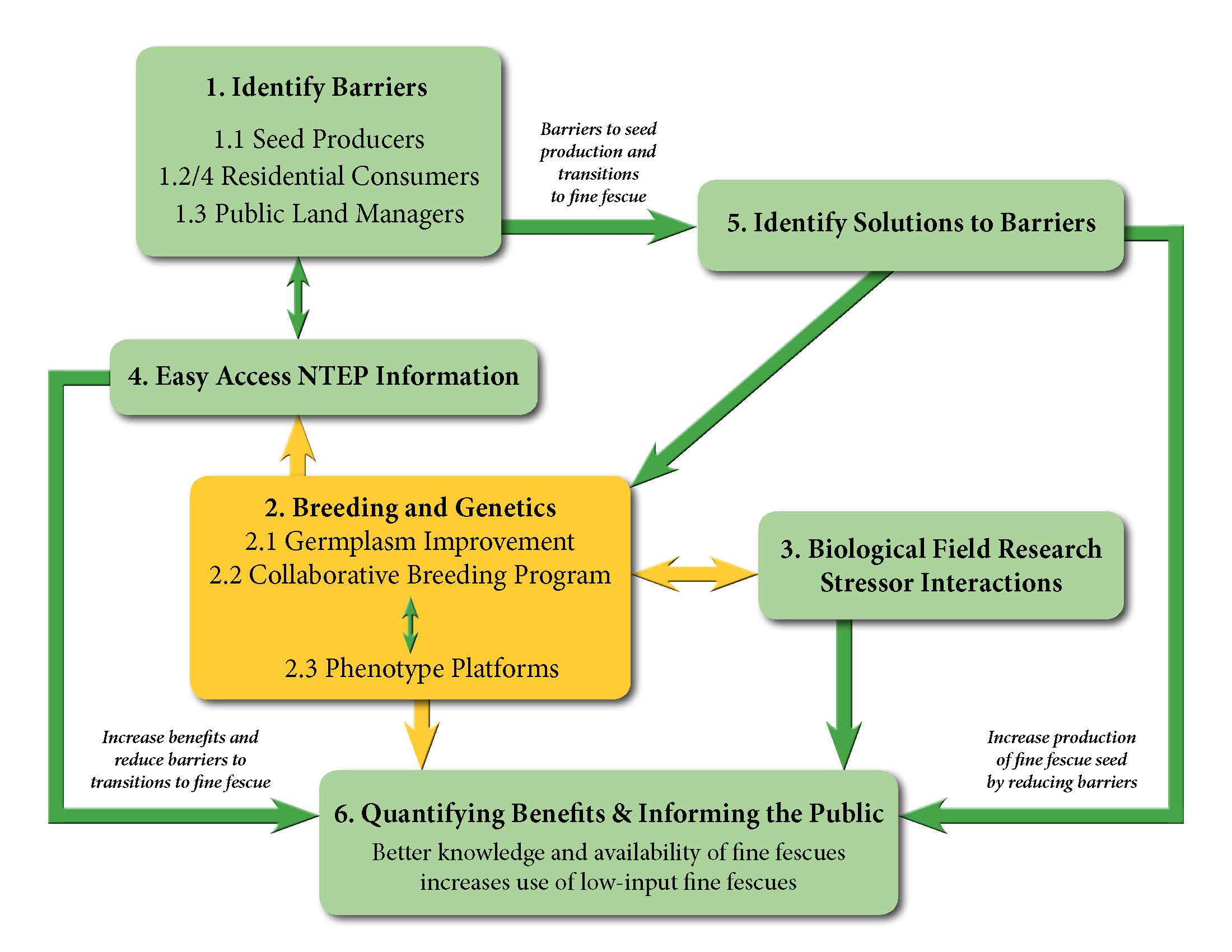Overview
Currently, Kentucky bluegrass and perennial ryegrass are the two primary species used for turf in the northern United States. These species provide a high quality turf when managed with sufficient inputs; however, there has been increasing attention drawn to the negative aspects of higher input turfs, including the excessive use of water, fertilizer, fossil fuels, and pesticides.
The fine fescues – strong creeping red fescue, slender creeping red fescue, Chewings fescue, hard fescue, and sheep fescue – can be a solution to these challenges. Fine fescues are species of turfgrass that need less water, mowing, and fertilizer. These traits make the fine fescues a sustainable alternative to some of the traditionally used turfgrasses.
The next challenge is to identify ways to facilitate adoption of these fine fescues on private and public landscapes. Our team received a $5.4 million grant for the Increasing Low-Input Turfgrass Adoption Through Breeding, Innovation, and Public Education project from the U.S. Department of Agriculture's (USDA) National Institute of Food and Agriculture (NIFA) to discover what is stopping homeowners from using fine fescues and how new varieties can be bred to overcome those obstacles. Our transdisciplinary approach will address social, marketing, technological, landscape management, and genetic barriers.
This project is a joint venture by participants from the University of Minnesota, Rutgers University, Purdue University, Oregon State University, University of Wisconsin and the USDA-ARS. It is funded by the USDA Specialty Crops Research Initiative (SCRI).
Objectives
This project builds on a previous grant from the USDA-NIFA's SCRI program that had the goal of developing improved, low-input fine fescue cultivars to provide economic and environmental benefits for the public. The long-term goal of this new project is to increase the use of well-adapted fine fescue cultivars in sustainable landscapes throughout the northern United States, Canada, and similar temperate regions. As part of our objectives, we will:
- Survey consumers, land managers, and seed producers about the barriers they face in conversion to and utilization of fine fescue grasses
- Lead a sustained effort of research focused on improving fine fescue traits identified as important by stakeholders utilizing new technologies and proven approaches
- Generate new knowledge about complex interactions between genetics and turfgrass management
- Find new ways to use publicly available data to improve turfgrass purchasing decisions
- Discover solutions to several barriers that are preventing stakeholders from using fine fescues on landscapes
- Deliver research-based information to consumers, seed producers, and land managers using new and innovative outreach methods
